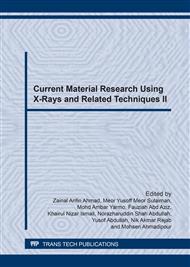p.203
p.209
p.216
p.222
p.228
p.234
p.239
p.244
p.251
Mechanical and Water Absorption Properties of Hybrid Kenaf/Glass Fibre Mat Reinforced Unsaturated Polyester Composites
Abstract:
Hybrid kenaf/glass fibre mat reinforced unsaturated polyester (UPE) composites have been prepared by using simple hand lay up moulding technique. The composites with various formulations were characterized by flexural test while water absorption behaviour were investigated with immersion in distilled water at room temperature. The result shows that the hybrid composites with kenaf fibre mat at the innermost layers (glass fibre mat at the outer layers) has given the highest flexural strength and modulus. On the other hand, water absorption study shows that, the hybrid composites with glass fibre mat at the innermost layers (kenaf fibre mat at the outer layers) showed the highest water uptake and thickness swelling. Further investigations on morphological properties were also done to correlate the mechanical properties of the hybrid kenaf/glass fibre mat reinforced UPE composites.
Info:
Periodical:
Pages:
228-233
Citation:
Online since:
March 2017
Price:
Сopyright:
© 2017 Trans Tech Publications Ltd. All Rights Reserved
Share:
Citation:


